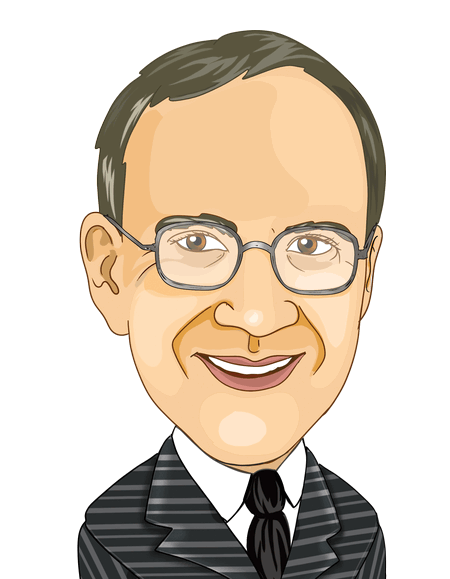

Summary
-
- The pace of Fed rate hikes over the past year is the fastest and biggest since the Volcker campaign against inflation more than four decades ago.
-
- But Fed policy remains remarkably dovish by 20th-century standards, with the FFR well below inflation. Historically, the Fed had to push the FFR well above inflation and bring on recession to corral inflation.
-
- Yet, markets are anticipating that the Fed will soon cut rates due to the ongoing banking crisis and a slowing economy.
-
- We acknowledge that uncertainty is high and that the Fed could cut rates or pause them to ease tensions.
This article is only available to Macro Hive subscribers. Sign-up to receive world-class macro analysis with a daily curated newsletter, podcast, original content from award-winning researchers, cross market strategy, equity insights, trade ideas, crypto flow frameworks, academic paper summaries, explanation and analysis of market-moving events, community investor chat room, and more.
Summary
- The pace of Fed rate hikes over the past year is the fastest and biggest since the Volcker campaign against inflation more than four decades ago.
- But Fed policy remains remarkably dovish by 20th-century standards, with the FFR well below inflation. Historically, the Fed had to push the FFR well above inflation and bring on recession to corral inflation.
- Yet, markets are anticipating that the Fed will soon cut rates due to the ongoing banking crisis and a slowing economy.
- We acknowledge that uncertainty is high and that the Fed could cut rates or pause them to ease tensions.
Market Implications
- If the Fed relaxes its focus on inflation, it will more likely need to hike to 7–8% eventually, in line with our Fed watcher’s forecast.
- That would likely usher in the next leg of this bear market.
Markets Look for the Fed to Blink
After its last meeting on 22 March 2023, when the Fed raised the federal funds rate (FFR) to 4.75–5.00%, Chair Jerome Powell reiterated that the Fed is prepared to keep pushing rates higher if inflation does not soon subside. That was despite the ongoing banking crisis that followed the failure of Silicon Valley Bank (SIVB) on 10 March 2023.
Yet, the two-year Treasury rate remains around 4% after trading near 5% in early March, a strong signal that markets expect rate cuts in the foreseeable future.
In our view, one of three things has to happen for that forecast to be realised:
- Inflation drops sharply below 3%, with every indication it will continue to fall;
- There is some major crisis similar to 2008–09 or the onset of the pandemic;
- The Fed blinks.
Our guess is that markets are expecting the Fed will blink and cut rates because of concerns about a slowing economy, hoping that inflation will follow, or to ease pressure on banks if the current crisis continues to simmer. The bottom line will be that inflation is still well above 3%.
We are not going to call what the economy or inflation might do or how the Fed will respond, though history strongly suggests the Fed will not corral inflation until it raises rates well above 5%. Here is why.
Fed Stance Is Dovish
Much has been made of the pace of Fed hikes since March 2022 – 475bp in a year – the fastest pace since the Volcker rate hikes of 1979 and 1980. The implication is that pace along with the oft-mooted 5.00–5.25% terminal rate would be what it takes to control inflation and get itmoving toward the 2% target rate.
But by the standards of pre-2000 Fed policy, that strategy has been remarkably dovish. In every instance of rising inflation from the 1950s to 2000 (and briefly in 2006–08), the Fed pushed the FFR to or well above the inflation rate (Charts 1 and 2).
During the 1980s and 1990s, the FFR was well above the inflation rate. The economy and markets may have struggled at times, but as Alan Greenspan’s oft-quoted quip about irrational exuberance in late 1996 testified, there were periods when markets and the economy did just fine too.

So, Where Are We Today?
A terminal value in the 5.00–5.25% range is well below the Consumer Price Index (CPI) of 6.40% or Personal Consumption Expenditures (PCE) at 5.40%.[1] The real rate (FFR minus inflation) is still negative, but in the past, a 2% real rate was considered a level consistent with stable inflation, and it went higher to fight inflation or slow the economy.
Clearly, this Fed is not the inflation-fighting Fed of bygone times. Or, perhaps the Fed has extraordinary confidence that inflation will drop quickly below the FFR and toward its 2% target (although its record so far in this cycle is dismal). Or maybe things are just different this time around.
We do not know whether the FFR is high enough to lower inflation, if structural factors are coming into play to reduce inflation, or if inflation will just stay near where it is.
Granted, the most recent economic data has led some people at the Fed to start discussing higher rates (couched in terms such as ‘if inflation does not come down quickly…’), but no one is talking about pushing the FFR above inflation, let alone two or three points, as was the norm in the 20th century.
We can say with some confidence that the economy and corporate earnings seem to be able to handle the current FFR and, presumably, the oft-mooted terminal target. And that is what equity markets care about and why equities have traded in a well-defined range since early last summer, even as rates rose steadily.
What if the Fed Turns More Hawkish?
Our macroeconomist and Fed watcher Dominique Dwor-Frecaut has been calling for the terminal FFR to approach 8% since it became clear how strong inflation had become. That seems extreme given the norms since the financial crisis, but it is within the norms of 20th-century monetary policy.
If the Fed eventually did keep pushing the FFR toward that 8% target, equities would likely abandon the trading range of the past several quarters. In this scenario, markets would probably anticipate a recession, rising unemployment, and collapsing earnings. We would likely see the second leg of this bear market.
Fed’s Old Playbook Is Waiting
Before the SIVB failure and subsequent banking crisis, we had expected that day would come sooner rather than later. Now, of course, there is more uncertainty about the financial system, economy, and Fed response. We see some risk that the Fed does cut rates or goes on an extended pause to ease tensions. If it does, that raises the risk of pushing rates up to the 7–8% range to stymie inflation.
We acknowledge there is a lot about this business cycle and inflation burst that is different from other post-war episodes. That makes it difficult, if not impossible, to call how inflation (and Fed policy) will evolve in coming quarters. Still, we are unprepared to throw caution to the wind and acknowledge that ‘it is different this time’.
We will keep an open mind as the data comes in, but our best guess is that today’s Fed will revisit that old playbook sooner or later.
[1] The PCE is the Fed’s preferred inflation measure. We use CPI in Chart 1 because it offers five years more history. The profile PCE versus inflation is similar.
Over a 30-year career as a sell side analyst, John covered the structured finance and credit markets before serving as a corporate market strategist. In recent years, he has moved into a global strategist role.
Photo Credit: depositphotos.com
